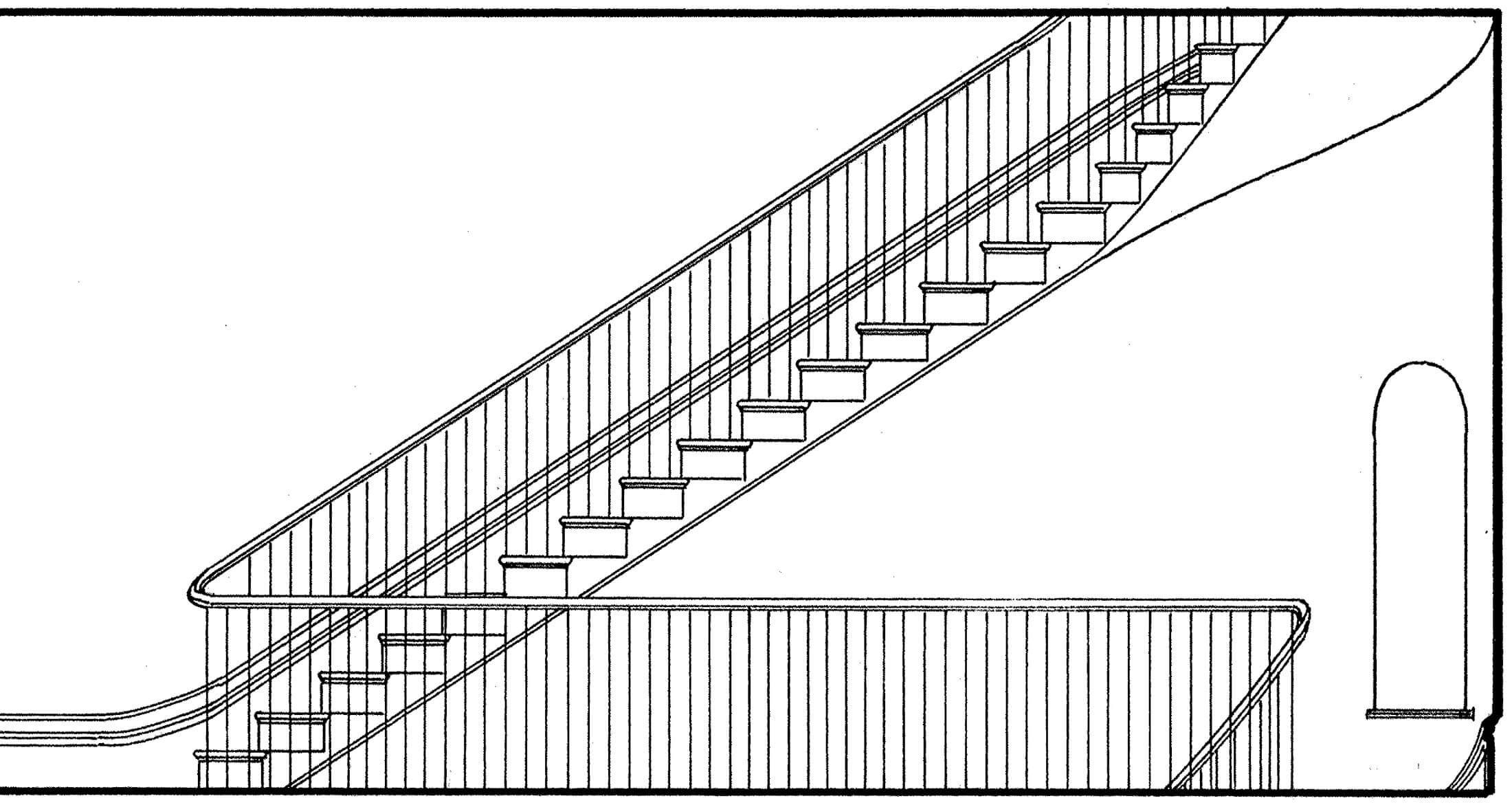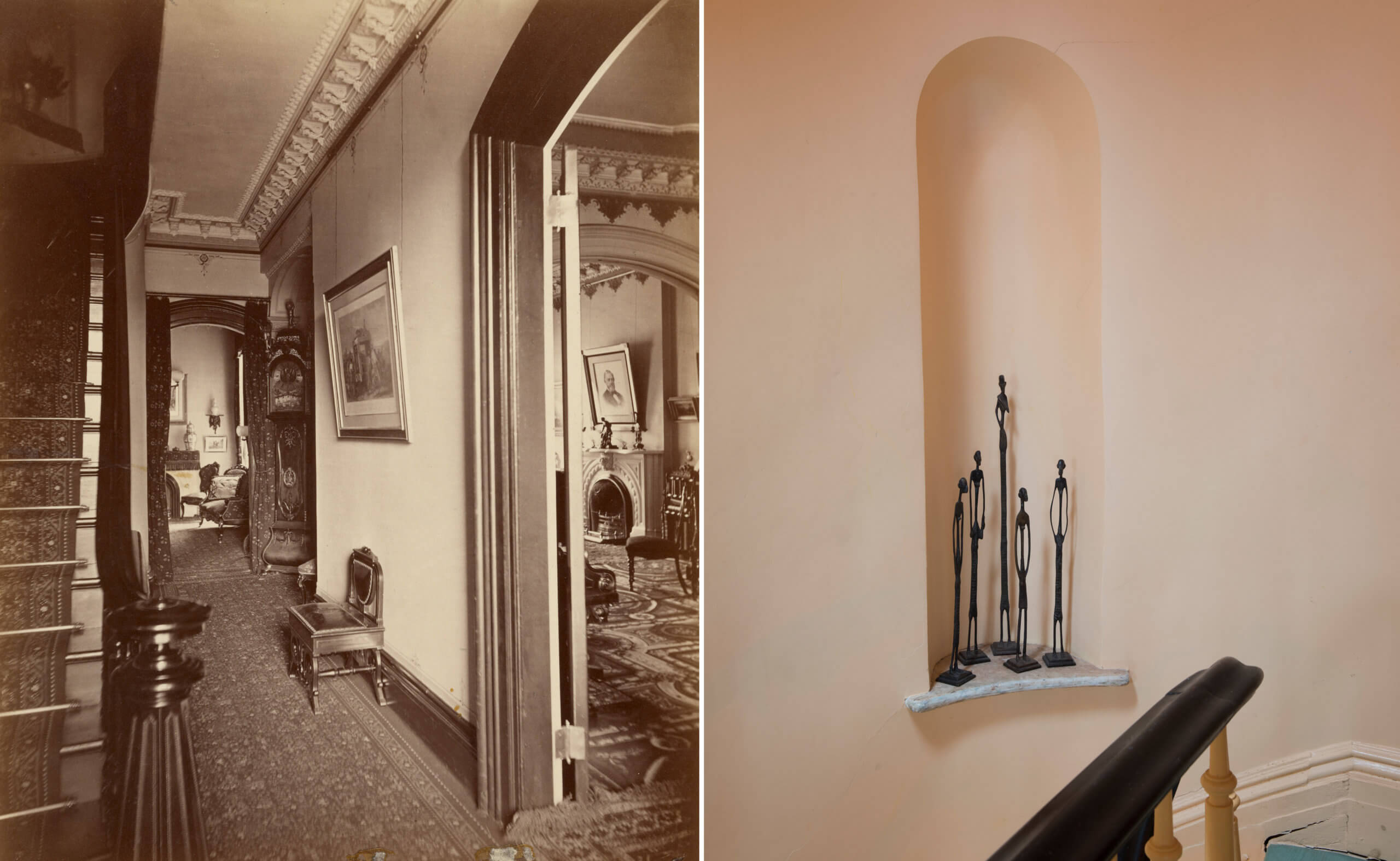The Mythology of the Coffin Corner
It is perhaps understandable that the term coffin corner has persisted as a bit of old house lore.

A faux paint treatment and flowers highlight a stair niche in an 1830s Greek Revival at the 2022 Brooklyn Heights Designer Showhouse. Photo by Susan De Vries.
It is perhaps understandable that the term coffin corner has persisted as a bit of old house lore. “Stair niche” doesn’t quite have the same zing. A recess found at the turn of a tight staircase in houses of the mid 19th century, the decorative detail has a much less somber use than its nickname implies.
The mythology asserts that the shallow, round-headed niches were a practical necessity, allowing space for coffins to make the turn on their way down a narrow, curved staircase from the bedrooms of the upper stories to the parlor below for a formal viewing. Author William Thackeray attributed the same use to arched windows found in English curved staircases in his book “Vanity Fair,” published in 1847. While he didn’t explicitly use the term “coffin corner,” he wrote that “a little arch in the wall” of the staircase gave light to a stair and allowed undertakers “to rest the coffins upon that arch, or pass them through it so as not to disturb in any unseemly manner the cold tenant.”

This tale, while a work of fiction, was taken up in “Victoria Royal: The Flowering of a Style” by Rita Wellman in 1939 when referring to the niches. The informal history, while acknowledging that the decorative feature traditionally held a sculpture or urn, referred to it as a “coffin niche” and repeated the notion that the feature allowed for the movement of a coffin.
While the form itself is ancient and there are visual connections with the arched openings (arcosolium) found in catacombs, ultimately Thackeray wove an evocative fictional story. No contemporary 19th century nonfiction mentions of a stair niche or window in a home specifically for a funereal purpose appear to exist. On a practical level, the explanation falls short: Why carry a heavy coffin up a narrow staircase and then back down again?
What does appear in contemporary accounts are wall niches as a decorative detail, inspired by Classical examples. Pattern books of the early and mid 19th century such as those by Minard Lafever provided instructions on the geometry and building of a niche. An 1840 pattern book by Baltimore architect John Hall includes a plan for a three-story house with a description noting that the “circular part of the wall of the principal stairs has niches formed in it to contain vases, or any other appropriate ornament.” An 1851 Evening Post ad for the auction of “fancy goods” specifically mentions the availability of sculptures “appropriate for stair niches.”
The coffin corner mythology seems to have really taken off in the mid 20th century, particularly as historic house tours and interest in Victoriana flourished. A tour guide could inject a frisson of ghoulish excitement with a tidy historic “fact.” It was pervasive enough that John Maass, author of numerous articles and books on Victorian-era architecture in the 1970s, dubbed it the “absurd coffin canard.”

Tellingly, the term was already in use elsewhere. In what must be a rare instance of sports, military and architectural terms overlapping, coffin corner was in use throughout the 20th century to describe having to maneuver in a tricky corner or from a difficult position, whether during a football game or battle.
In that context, the assignment of the nickname makes sense. As modern Brooklynites can attest, attempting to move furniture up a curved, narrow staircase in a mid-19th century brownstone is indeed attempting to maneuver in a tricky spot.
Because of the size of the shallow recess, its use in Brooklyn homes hasn’t changed much over the centuries. Whether painted, papered or otherwise highlighted, ultimately the stair niche continues to be a place where vases, sculptures and flowers are displayed and not where coffins come to rest.
Editor’s note: A version of this story appeared in the Fall/Holiday 2022 issue of Brownstoner magazine.
Related Stories
- A Breath of Fresh Air: A Short History of the Sleeping Porch
- How to Get the Look: Victorian Bathroom Tile
- Lighting in the 19th Century Row House
Email tips@brownstoner.com with further comments, questions or tips. Follow Brownstoner on Twitter and Instagram, and like us on Facebook.





What's Your Take? Leave a Comment